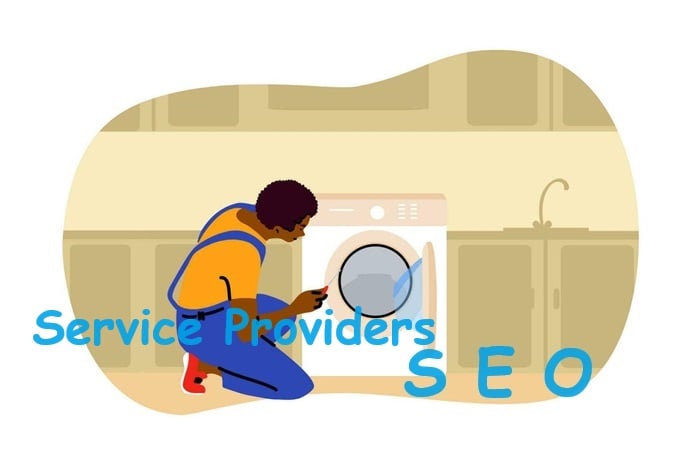Domestic repairs and service-oriented websites can effectively align with user intent, turning blog content into a source of revenue in the process. Distinguishing between traditional e-commerce SEO and SEO for service providers involves significant disparities in keyword research and the creation of converting blog content.
This contrast further varies between local and national contexts, but for the purpose of this post, I will maintain a focus that is both actionable and relevant to service providers in a general sense.
Please bear in mind that service providers consist of online entities (such as hosting, VPNs, legal documents, etc.), physical services (like plumbing or car towing), and hybrid services (such as a veterinary pharmacy offering both pickups at locations and national shipping). Use these strategies according to the specific nature of the services you provide.

Strategies for Conducting Local Keyword Research
The initial section of this post talks about the keyword research.
Just like a T-shirt store might target generic phrases such as “electricians near me” or “cat trainers in Chicago,” the approach to keyword research remains consistent. You use your preferred tool, like Google’s Keyword Planner, although it’s essential to note that Keyword Planner may not provide detailed insights into local search volumes. In such cases, leveraging your knowledge of the area becomes crucial.
Consider the specific neighborhoods where your target audience resides. My method for measuring market demand involves amalgamating the total search volume from a larger city with a comparable demographic or, alternatively, on a national scale. Then divide this figure by the city’s population, integrating a weighted changes based on the demographics of that region.
For instance, if there are 200 people searching nationally and your city constitutes 20% of the population, you would estimate that 20 people are conducting local searches. Adjust this figure upward to 22 if your city exhibits a higher density of relevant demographics, or decrease it to 18 if the density is lower.
Customizing SEO Strategies with Local Knowledge
Suppose you operate a daycare service, and your city has a higher concentration of residents likely to have children compared to other areas. In such cases, consider adding a slight increase to your projected search volume.
Conversely, if you provide a cat training service for large cats, but the demographics in your suburbs show a preference for breeds like Munchkin and LaPerm, it’s advisable to decrease the estimated search volume accordingly.
Now, let’s factor in your firsthand knowledge of the region. Using the daycare example, envision your facility situated downtown, while your target audience predominantly resides in the suburbs and residential neighborhoods within the city.
During local keyword research, focus less on the specific neighborhoods where your audience resides and more on the needs of downtown professionals seeking childcare while at work.
For instance, if the daycare is in Chicago, IL, and you’re targeting customers in the downtown area, prioritize keywords like “childcare in downtown Chicago” or the specific location of your establishment. This ensures your SEO efforts align with what your customers are searching for and where your business is situated.
Long Tail and Longer Phrasing
Moving on to the long-tail keywords and phrasing, where the real value lies. Consider the demands of a busy professional. There will be occasions when they work late and are unable to pick up their kids on time, making it essential to optimize for terms like “open late.”
Likewise, proximity to their workplace matters. Rather than a generic “downtown” search, they might specify “by Chinatown” or “near the Willis Tower” if they work on the tower. Integrate such specifics into your content, perhaps in an FAQ section detailing distances or providing directions.
This type of content not only adds value for potential customers and aids existing ones in locating you but also informs search engines about your services and their locations. Traditional keyword research tools may fall short in identifying these volumes. Hence, as a local service provider, it falls on you to blend modifiers with primary queries, leveraging your knowledge of the area.
Ensure your operating hours are prominently displayed on your page, include them in your Google Business Profile, and implement proper schema markup indicating the serviced area along with daily operating hours. This strategic approach gives you an edge over competitors lacking flexible hours or the expertise of an SEO professional in growing their business.
Local Service Blogging and SEO Strategy
Another approach to conducting keyword research for service providers involves identifying the questions your audience is asking. Consider the environmental conditions of your locality, whether it’s a dry area with minimal water or a coastal floodplain. These variations influence the distinct needs of your audience.
Take the example of a domestic repairer or plumber. In a desert region, issues like dry rot in roofs may be prevalent, whereas wet climates may experience more mold or leaks due to the expansion, contraction, and deterioration of materials caused by water and ice.
As a local service provider, create informative content on how to identify and address common and uncommon problems. Craft “how-to” blog posts catering to the specific issues you frequently resolve.
By sharing this content, you not only assist your local community but also help individuals in similar climates understand the steps involved in resolving these issues. DIY enthusiasts can attempt fixes themselves, and for more complex problems, you can offer a method for them to request a quote for your services.
Implementing a remarketing pixel allows you to promote your services to this audience, potentially introducing a home upkeep subscription package to establish monthly recurring revenue (MRR).
If you sell the necessary parts or tools for repairs, integrate internal links to these product pages. Include a call to action at the end of your posts, directing DIYs to shop for the tools required to address specific damage (“Click here to shop for each of the tools you will need to fix the ABC damage”).
For nationwide services, use a similar strategy, but categorize your blog differently. Local businesses should have categories addressing specific regional issues, while nationwide services should organize content in user-friendly categories, ensuring people from any location can easily access the relevant resources.
Use YouTube as a valuable resource for discovering “how-to” topics. Begin by entering the initial words or even just the issue into the search box to see the recommended searches.
Next, examine the titles of the videos that appear and assess metrics such as view counts, comments, thumbs-ups, and other signals to gauge the prevalence of the issue. While the blog post focuses on the “how-to,” it’s important to consider the service pages themselves. Segment the keywords based on user intent.
For those seeking “how to” information, they might be identifying problems, attempting a DIY fix, or simply looking for step-by-step guidance. Alternatively, they might be assessing the skill levels required and deciding whether the task is too complex. This is where your expertise can step in to provide a solution.
If the query is specific, like “roofers that specialize in mold,” it indicates someone seeking a service provider. In this case, optimize your service page rather than the how-to guide.
Generate Revenue from Your Service-Based SEO Efforts
Now that you’ve explored various methods for researching keywords for service providers, let’s dig into the final aspect: generating revenue even before having a product or ebook.
There are several viable options:
Build a newsletter list and sell sponsorships: To local or national businesses that align with your offerings. This way, you generate income even if your audience isn’t immediately ready to make a purchase or is currently out of the market. By consistently sharing relevant content on a weekly or monthly basis, you build trust, making them more likely to contact you when they require your services.
Integrate affiliate links: Use affiliate links within and throughout your content. This strategy allows you to identify which products, services, and guides yield the best conversion rates. This valuable insight informs your decision-making process when expanding your offerings, ensuring you cater to what your audience uses most frequently.
As your traffic grows, consider joining a cost-per-thousand (CPM) or cost-per-click (CPC) Ad Network: This enables you to earn income based on the views and clicks generated by your audience.
Sell ad space and sponsorships to complementary companies or service providers: This approach provides an additional revenue stream.
There is no shortage of monetization options. The key lies in directing your audience to a platform you control, where you can effectively market back to them. This could be a newsletter or SMS list or a forum and community where they feel at home. Building and maintaining such a platform ensures you have a direct channel to your audience, facilitating ongoing engagement and revenue opportunities.
Would you like to read more about “How to Optimize Keywords for Service Providers and Transforming Blog Content” related articles? If so, we invite you to take a look at our other tech topics before you leave!
Use our Internet marketing service to help you rank on the first page of SERP.
![]()










